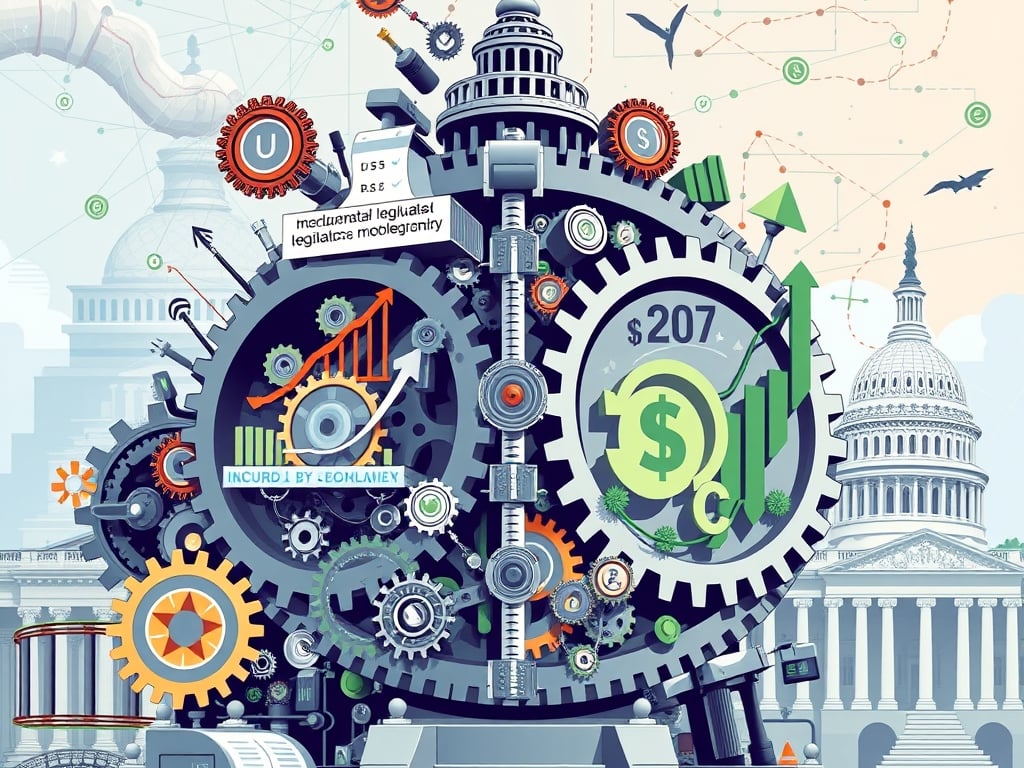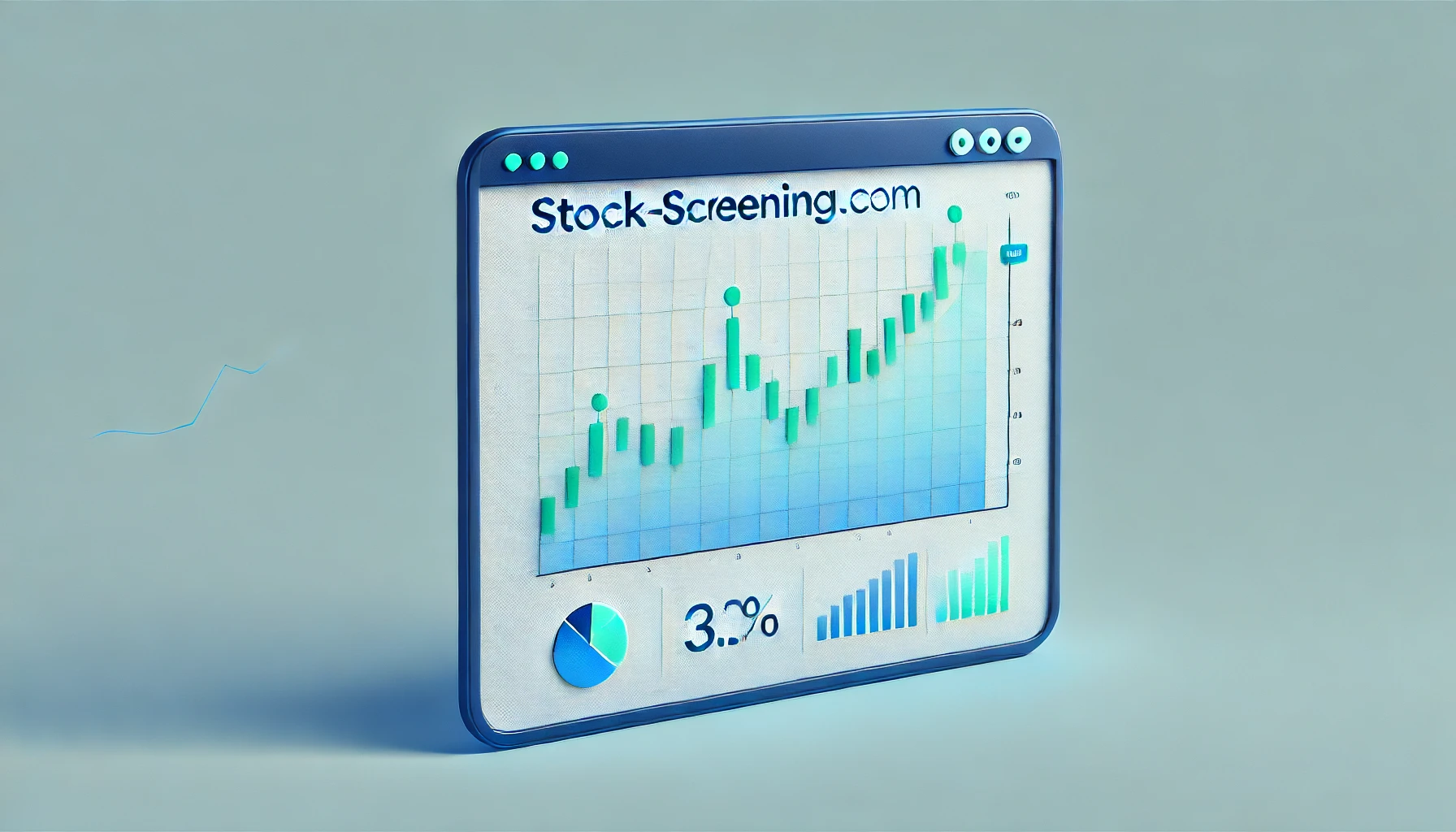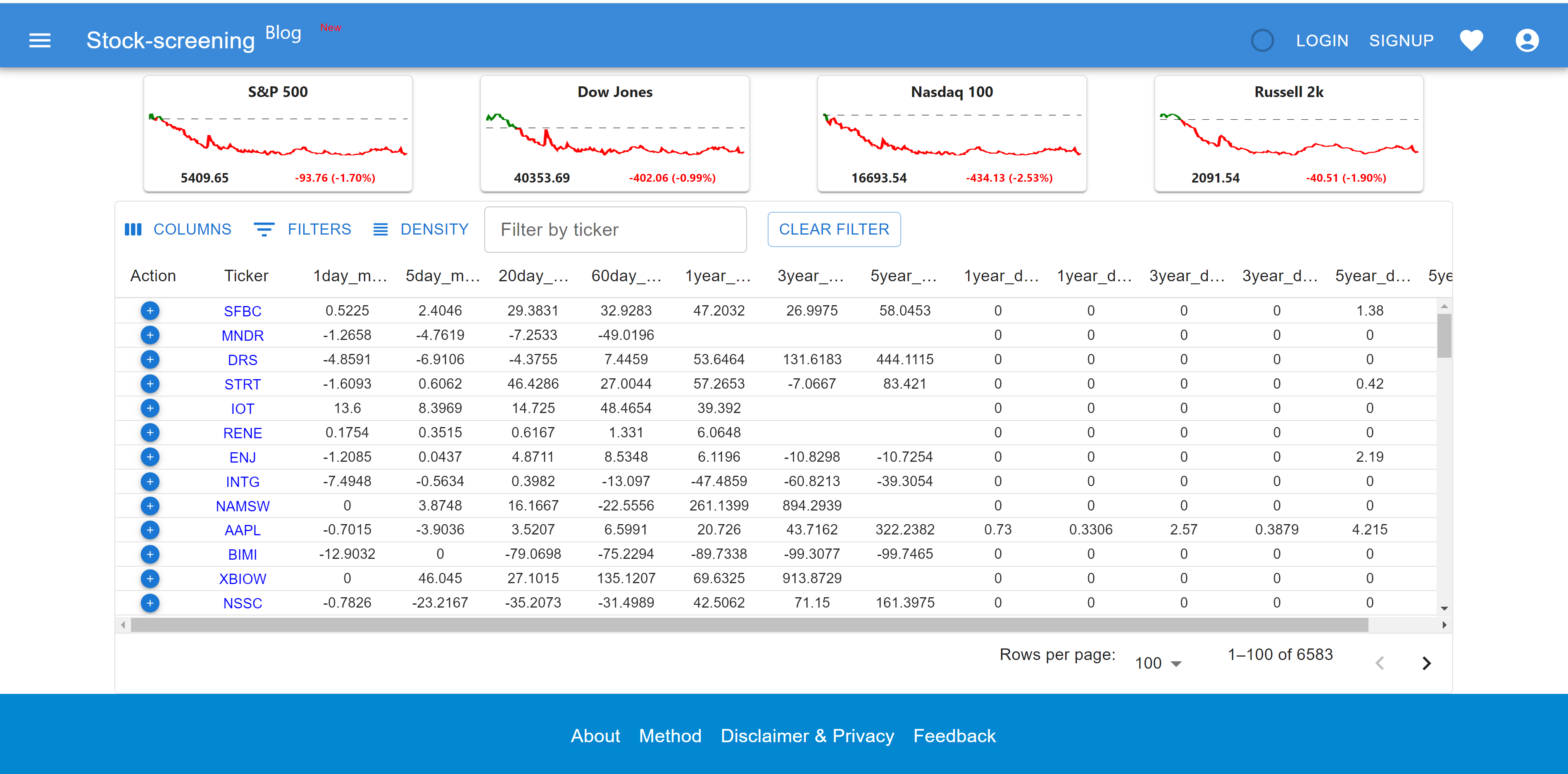Comprehensive Report on the One Big Beautiful Bill (OBBB)
This report presents an exhaustive analysis of the One Big Beautiful Bill, a unique legislative initiative that simultaneously increases the U.S. debt ceiling and implements significant tax cuts. It integrates insights from fiscal multipliers, econometric model assumptions, and both static and dynamic projection methodologies to evaluate the short-term stimulus effects and long-term debt sustainability concerns. The report discusses in detail the underlying assumptions of the econometric models, calibration techniques, scenario-based sensitivity analyses, and the broader implications for investor sentiment and credit qualities.
1. Overview of the Bill and Its Dual Mechanisms
The OBBB is designed with a dual approach:
-
Debt Ceiling Increase: The allocation provides the government with higher borrowing capacity, which is intended to stabilize government funding and avoid defaults. It also serves as a political signal to the markets that necessary liquidity will be maintained even in times of fiscal stress.
-
Tax Cuts: These are substantial reductions in effective tax rates—estimated in the range of 3–5 percentage points for corporations and high-earning individuals. The tax cut is theoretically structured to stimulate consumer spending, incentivize corporate investments, and ultimately drive GDP growth.
1.1 Short-term Stimulus vs. Long-term Fiscal Implications
-
Short-term Gains: The tax cut element is forecast to drive immediate economic activity through increased disposable income and heightened business activity, which, according to several studies, could lead to noticeable gains in GDP in the near term. Investors might initially regard such measures positively, reflecting an optimistic re-rating of growth trajectories.
-
Long-term Risks: However, the elevated debt ceiling, when combined with the tax revenue loss from the lower tax rates, raises caution among fiscal authorities. Static debt projection models predict that if multiplier effects and other dynamic offsets are not fully realized, the federal deficit could inflate annually by several hundred billion dollars. Critics argue that this could compound over time, potentially increasing U.S. debt by more than $3 trillion over the long run.
2. Econometric Modeling Approaches
The fiscal impact of the OBBB has been evaluated using two primary econometric frameworks: static models and dynamic models. Each approach has distinct methodologies and implications for long-term forecasts.
2.1 Static vs. Dynamic Models
| Model Type | Key Characteristics | Advantages | Limitations |
|---|---|---|---|
| Static Models | Assume fixed parameters such as constant interest rates, GDP growth, and primary balances. Often rely on a snapshot view ignoring feedback effects. | Simplicity and ease of calculation. Provides quick estimates under fixed assumptions. | Underestimate adaptive behavioral changes. May not account for macroeconomic feedback loops, thus potentially overestimating debt increments. |
| Dynamic Models | Incorporate real-time feedback mechanisms by allowing key parameters (e.g., fiscal multipliers, market responses) to vary over time. Models adapt to shocks using simulation methods (Monte Carlo, Bayesian techniques). | Greater accuracy in capturing non-linear dynamics and shock propagation. Better suited for policy analysis under volatile conditions. | Higher computational complexity and data demands. Require robust recalibration using advanced programming tools and high-performance computing environments. |
2.2 Econometric Foundations and Calibration
Both modeling frameworks depend heavily on:
-
Fiscal Multipliers: The multiplier effect is critical in analyzing the net impact on GDP versus the fiscal cost. Static analyses often rely on a one-time multiplier effect, while dynamic models simulate variable effects over multiple periods.
-
Parameter Estimation: Advanced dynamic models integrate Bayesian and stochastic methods (e.g., distributed MCMC, particle MCMC) which improve uncertainty quantification.
-
Calibration Techniques: Models use historical data (from the 1990s through the mid-2020s) to align outputs with observed economic trends. Calibration includes feedback adjustments for economic shocks, policy lags, and multiplier variability.
3. Detailed Fiscal Impact Analysis
3.1 Tax Cut Implications
The tax component under OBBB reduces effective tax rates by 3–5 percentage points, which could result in:
-
Stimulus Effect: An anticipated increase in consumer spending and corporate investments. Historical analyses suggest that such tax cuts trigger higher economic activity, eventually leading to increased tax revenue due to growth.
-
Revenue Forecast: A basic forward-looking calculation, assuming a constant dynamic multiplier of 1.5, might be illustrated as follows:
Table 1: Simplified Tax Revenue Impact (Illustrative Calculations)
| Scenario | Assumed GDP Growth (%) | Tax Rate Reduction (%) | Stimulated GDP Increase (%) | Additional Tax Revenue (as % of baseline) |
|---|---|---|---|---|
| Baseline (Static) | 2.0 | – | – | 0.0 |
| With OBBB (Dynamic) | 3.0 | 4 | 1.5 | ~0.6 to 1.0 |
Explanation: If tax cuts spur a one percent additional GDP increase (when considering multiplier effects dynamically), then the increased tax base might recoup part of the revenue loss over time. The range given (0.6%–1.0%) is simplified and subject to scenario variability.
3.2 Debt Ceiling Increase and Long-term Debt Projections
The increase in the debt ceiling mitigates immediate liquidity crises, but dynamic models reveal its dual-edged nature:
-
Short-Term Stabilization: In the immediate term, markets respond positively, avoiding bond defaults and possible geopolitical ramifications.
-
Long-Term Debt Concerns: Using a baseline static projection, if interest expenses and spending continue at current trends with only a marginal growth effect from the tax cuts, the U.S. debt might swell by more than $3 trillion. However, dynamic models that incorporate potential GDP growth and increased revenue from the stimulated economy could reduce the net debt increase by 5–10 percentage points relative to static estimates.
Table 2: Illustrative Debt Projection Comparisons
| Projection Model | Debt-to-GDP Ratio Increase (Mid-term Forecast, % Points) |
|---|---|
| Static Model | +15 to +20 |
| Dynamic Model | +10 to +15 |
Explanation: As dynamic models adapt interest rates and growth responses over time, the projections only ascribe a lower risk premium. Nonetheless, these numbers are dependent on multiplier accuracy and recalibration frequencies.
3.3 Tariff Revenue Considerations (Hypothetical)
Although the OBBB does not directly address trade policy, an additional factor in the fiscal outlook could be tariff income. Given that the U.S. imports roughly $4 trillion in goods and services annually, an average tariff of 10% on those imports could theoretically generate about $400 billion in revenue (while a 20% tariff might yield around $800 billion). These rough estimates assume trade volumes remain unchanged; in reality, higher tariffs would likely suppress import volumes and could provoke retaliatory measures, reducing the actual revenue gain. If substantial tariff revenues were realized, they could partially offset the revenue loss from the tax cuts and moderate the growth of the deficit. However, reliance on tariffs as a fiscal tool carries its own economic trade-offs, potentially affecting consumer prices and international trade relationships.
Table 3: Adjusted Debt Projection with Estimated Tariff Revenue
| Projection Model | Baseline Debt-to-GDP Ratio Increase(% Points) | Estimated Tariff Revenue($ Billions) | Adjusted Debt-to-GDP Ratio Increase(% Points) |
|---|---|---|---|
| Static (no tariff) | +15 to +20 | 0 | +15 to +20 |
| Static + 10% Tariff | +15 to +20 | ~400 | +10 to +14 |
| Static + 20% Tariff | +15 to +20 | ~800 | +5 to +9 |
| Dynamic (no tariff) | +10 to +15 | 0 | +10 to +15 |
| Dynamic + 10% Tariff | +10 to +15 | ~400 | +6 to +10 |
| Dynamic + 20% Tariff | +10 to +15 | ~800 | +1 to +6 |
4. Sensitivity Analysis and Scenario Evaluation
A thorough sensitivity analysis reveals that the influence of exogenous shocks—such as demand spikes, supply constraints, or unexpected fiscal shifts—can substantially alter fiscal forecasts. Key points include:
-
Scenario Variability: Minor changes in tax multipliers or interest rate assumptions can result in debt-to-GDP differences of ±5–10 percentage points. Historical cases like the 2011 debt ceiling debates provide a reference point where similar fiscal measures translated into severe credit rating downgrades (e.g., from AAA to AA+ by S&P).
-
Stress Testing: Analysts use simulation techniques (e.g., Monte Carlo simulations) to model thousands of potential outcomes. Under worst-case scenarios (combining lower-than-expected economic growth with higher-than-anticipated interest rates), the downside risks become pronounced.
-
Political and Market Sentiment: The dual nature of the bill introduces volatility. While short-term investor confidence surges due to stimulated economic activity, long-run market assessments may focus on the growing deficit, thereby increasing risk premiums and potentially elevating the cost of capital.
5. Policy Implications and Strategic Considerations
The OBBB represents a dramatic rethinking of fiscal legislation by consolidating multiple reforms into one package. Policymakers must weigh the following considerations:
-
Integrative Forecasting: Adoption of dynamic scoring models should become standard in fiscal analysis to capture evolving macroeconomic interdependencies.
-
Bipartisan Strategy: The historical precedent of past fiscal compromises—including tax cuts paired with debt ceiling adjustments—underscores the need for bipartisan support to maintain investor confidence and stabilize credit ratings.
-
Long-term Debt Sustainability: While tax cuts can generate short-term boosts in growth, the long-term implications of a higher debt ceiling and lower revenue necessitate ongoing oversight and readiness to adjust fiscal policy based on updated economic feedback.
-
Investor Communication: Clear communication of the underlying assumptions—especially regarding the differences between dynamic vs. static projections—can shape market perceptions and help maintain U.S. creditworthiness.
6. Conclusions and Future Directions
The One Big Beautiful Bill is emblematic of modern fiscal policy challenges, blending immediate economic stimulation with complex long-term debt management concerns. Its dual strategy of leveraging tax cuts to spur economic growth and increasing the debt ceiling to maintain liquidity is not without risks. Detailed analysis illustrates that while dynamic models provide a more nuanced (and somewhat more optimistic) outlook on fiscal stability, uncertainties remain inherent in such forecasts.
Looking ahead, it is critical that policymakers use up-to-date data and realistic economic assumptions when evaluating the outcomes of legislation like OBBB. They may also consider complementary measures to maintain fiscal balance, such as exploring alternative revenue sources (for example, selective tariff adjustments as estimated above) or future spending reforms to offset rising deficits if needed. Crucially, maintaining transparency about the bill’s economic assumptions and ongoing impacts will help preserve investor confidence and the nation’s credit standing.
Overall, OBBB’s approach could indeed stimulate growth and potentially increase tax revenues in the short run, but the associated risks of an expanding federal debt and the chance of credit rating downgrades necessitate careful, ongoing evaluation. Balancing these outcomes with adaptive policy measures remains the cornerstone for long-term fiscal sustainability.
Note: The analyses and projections provided herein, including the tables and illustrative calculations, are speculative and based on current economic paradigms. Future adjustments to model parameters or incorporation of more real-time data could significantly alter these forecasts.
Sources
-
https://www.nbcnews.com/politics/congress/republican-big-beautiful-bill-win-loses-rcna215910
-
https://taxfoundation.org/blog/one-big-beautiful-bill-pros-cons/
-
https://www.crfb.org/blogs/breaking-down-one-big-beautiful-bill
-
https://taxfoundation.org/research/all/federal/big-beautiful-bill-house-gop-tax-plan/
-
https://www.washingtonpost.com/business/interactive/2025/trump-big-beautiful-bill-your-taxes-cuts/
-
https://epicforamerica.org/federal-budget/fiscal-effects-of-the-one-big-beautiful-bill/
-
https://www.brookings.edu/wp-content/uploads/2012/03/2012a_delong.pdf
-
https://www.federalreserve.gov/pubs/ifdp/2004/805/ifdp805.htm
-
https://pure.iiasa.ac.at/id/eprint/11581/1/150727_livro_modeling_complex_systems_public_policies.pdf
-
https://www.cfr.org/backgrounder/what-happens-when-us-hits-its-debt-ceiling
-
https://www.crfb.org/papers/qa-everything-you-should-know-about-debt-ceiling
-
https://www.sciencedirect.com/science/article/pii/S0040162524002865
-
https://www.cmu.edu/tepper/faculty-and-research/assets/docs/GZ_25June2010.pdf
-
https://www.imf.org/-/media/Files/Publications/GFSR/2025/April/English/ch1.ashx
-
https://budgetlab.yale.edu/research/long-term-impacts-one-big-beautiful-bill-act
-
https://bipartisanpolicy.org/explainer/the-2025-tax-debate-dynamic-scoring/
-
https://thehill.com/opinion/finance/5320248-the-bond-market-is-missing-the-real-big-beautiful-story/
-
https://facet.com/one-big-beautiful-bill-tax-cuts-deficit-impact-and-investor-outlook/
-
https://www.congress.gov/bill/119th-congress/house-bill/1/text
-
https://taxfoundation.org/blog/big-beautiful-bill-impact-deficit-economy/
-
https://www.cbo.gov/system/files/2025-06/hr0001-dynamic-estimate.pdf
-
https://www.sciencedirect.com/science/article/pii/S0169207022000553
-
https://papers.ssrn.com/sol3/Delivery.cfm/SSRN_ID3972280_code3197320.pdf?abstractid=3972280
-
https://www.sciencedirect.com/science/article/abs/pii/S0304407618302276
-
https://www2.stat.duke.edu/~mw/MWextrapubs/ZhouNakajimaWest2014.pdf
-
https://www.sciencedirect.com/science/article/abs/pii/S1574004816000070
-
https://www.congress.gov/committee-report/119th-congress/house-report/106/1
-
https://www.economist.com/graphic-detail/2025/07/01/ten-charts-to-explain-trumps-big-beautiful-bill
-
https://taxfoundation.org/research/all/federal/big-beautiful-bill-senate-gop-tax-plan/
-
https://www.wealthmanagement.com/etfs/how-the-one-big-beautiful-bill-could-impact-etf-investors
-
https://www.numberanalytics.com/blog/sensitivity-analysis-financial-success




